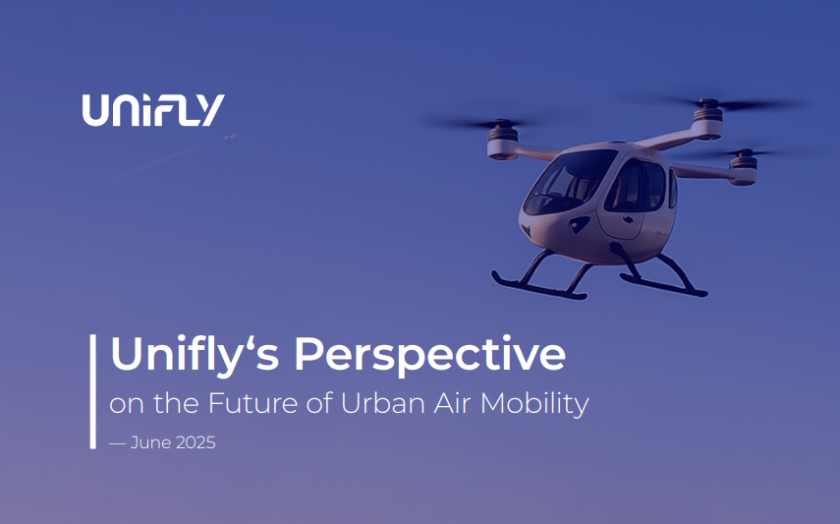“We’re approaching a tipping point. The vehicles are nearly certified, but the infrastructure to manage them is not.”
The words of Malik Doole, director of business development and regulatory affairs at Unifly. The challenge is highlighted in the company’s new position paper, released today (June 5), which outlines the strategic role of Uncrewed Traffic Management (UTM) in enabling safe and scalable Urban Air Mobility (UAM). As Electric Vertical Take-Off and Landing (eVTOL) aircraft move toward certification, the paper calls for urgent investment in digital infrastructure to manage increasingly dense, low-level urban airspace.
Titled Unifly’s Perspective: On the Future of Urban Air Mobility, the paper addresses key technical and regulatory challenges facing UAM integration, from airspace capacity management and vertiport throughput to cybersecurity, interoperability, and human-machine coordination. It sets out twelve recommendations for policymakers, ANSPs, OEMs, and regulators, including the phased convergence of UTM and traditional Air Traffic Management (ATM) systems.
The paper draws on scientific research and reflects Unifly’s role in the commercial deployment of UTM systems. It also introduces a vision for next-generation services by leveraging AI, for example, vertiport management, advanced flight planning, automated strategic and tactical deconfliction, and conformance monitoring.
The paper notes that a vertiport management service tailored to UAM will enable both safety and efficiency. For example, as UAM traffic density increases, effective vertiport arrival management will be critical to avoiding bottlenecks at vertiports. “Within the arrival management, a dynamic arrival framework that incorporates real-time vertiport capacity, eVTOL status, and weather conditions will enhance the arrival process,” the paper states. “The UTM system will leverage AI to allocate landing sequences based on factors such as aircraft type, available vertiport capacity, and
battery capacity. To optimise arrival traffic, airspace segmentation will allow for deconflicting simultaneous arrivals at multiple vertiports. Dedicated airspace corridors for inbound traffic will further reduce delays and improve safety by segmenting inbound flights from outbound flights. Additionally, the system will implement dynamic holding patterns and metering gates to manage traffic flow during peak periods.”
Meanwhile, Unifly explains how an AI-driven departure management tool that is integrated with UTM would minimise ground delay and allocate optimal departure routes by optimising key variables, such as vertiport capacity and incoming UAM aircraft. “The system will calculate the
scheduled time of departure to ensure efficient airspace utilisation and coordinate with arrival management to balance overall traffic flow capacity. Once takeoff, the climb-out phase represents a critical phase where aircraft transition from the very low-level altitude vertiport airspace to enroute airspace. To manage this effectively, the UTM system will provide specific altitude bands for climb-out operations.”
As well as in-flight and post-flight UTM services, the paper also details pre-flight UTM services that will offer advanced functionalities, such as dynamic flight plan updates, automated rerouting, contingency and emergency management, and API-based integration for seamless data exchange. It adds that Automated Strategic Deconfliction will be a key enabler for scaling UAM safely in complex, high-density airspace, along with a phased, interoperable integration between ATM and
UTM. On this, the paper includes an outline for the staged evolution of traffic management for UAM operations.
Unifly makes several recommendations in its paper, including recognising UTM as “essential digital infrastructure”, mandating e-conspicuity for all aircraft, cybersecurity certification, digital flight rules and standardisation.
“Europe’s leadership in advanced air mobility depends not only on airframes, but on the digital systems that make airspace work. This is about preparing cities and airspace providers for real-world operations,” said Unifly CEO Anders Van Swalm.
For more information




